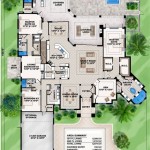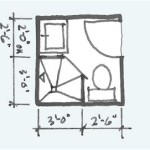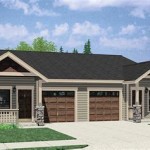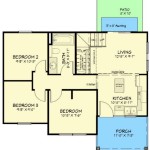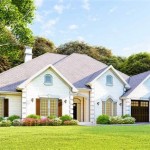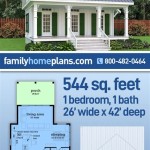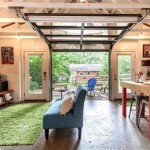Home Plans for Sloping Land: Maximizing Potential and Minimizing Challenges
Sloping land presents both unique opportunities and specific challenges for homeowners. While a flat, even plot might seem ideal for simplified construction, a sloping site can be transformed into a stunning and functional property with thoughtful planning and design. Selecting the right home plan is crucial to maximizing the aesthetic appeal, structural integrity, and usability of a home built on a slope.
The inherent characteristics of a sloping lot can provide several advantages. These include improved views, natural drainage, and the potential for walk-out basements. However, these benefits come with the need for careful consideration of factors such as soil stability, erosion control, and accessibility. The design process must integrate these elements to ensure a successful and long-lasting home.
Understanding the Slope and Site Characteristics
Before selecting a home plan, a thorough assessment of the site is essential. This assessment should involve a geotechnical investigation to determine soil composition, bearing capacity, and drainage characteristics. Understanding the soil type is crucial, as certain soils are more prone to erosion or instability than others. The slope's angle and aspect (the direction it faces) also influence the amount of sunlight and wind exposure the home will receive. This information significantly impacts decisions related to energy efficiency, landscaping, and overall design.
Local building codes and regulations play a critical role in determining the feasibility of building on a particular slope. Many jurisdictions have specific requirements regarding setbacks, retaining walls, drainage systems, and erosion control measures on sloping sites. Compliance with these regulations is essential to avoid costly delays and legal issues during the construction process. It also ensures the house meets required safety standards.
Consideration must be given to the existing vegetation and natural features of the site. Preserving mature trees and integrating natural landscape elements can enhance the aesthetic appeal of the home and provide natural erosion control. However, it is also important to assess the health and stability of existing vegetation. Diseased or unstable trees may need to be removed to prevent potential hazards.
Home Plan Styles Suitable for Sloping Land
Several architectural styles and house plans are well-suited for building on sloping land. The best choice depends on the specific characteristics of the site, the homeowner's preferences, and budget considerations. Some of the most popular and effective options include:
Split-Level Homes: Split-level homes are designed to integrate seamlessly with the natural contours of a sloping lot. They feature staggered floor levels, which minimize the amount of excavation required and reduce the visual impact of the structure. This design also allows for a greater connection to the landscape at different levels of the home. The split-level design is often an economical choice for sloping lots, as it reduces the need for extensive grading and retaining walls.
Walk-Out Basement Homes: These homes utilize the slope to create a fully functional basement level that opens directly to the outdoors. The exposed basement wall becomes an integral part of the home's facade, creating additional living space and improving access to the backyard. Walk-out basements provide the opportunity for additional bedrooms, recreational areas, or even a separate apartment. This can increase the home's value and functionality.
Raised Ranch Homes: Raised ranch homes are similar to split-level homes but typically have a more symmetrical design. The main living areas are located on the upper level, while the lower level is partially or fully submerged into the slope. This design allows for ample natural light in the upper level and provides direct access to the backyard from the lower level. Raised ranch homes are often more cost-effective to build than traditional two-story homes on sloping sites.
Hillside Homes: Hillside homes are custom-designed to blend seamlessly with the natural topography of the site. They often feature multiple levels, large windows, and extensive outdoor living spaces to take advantage of the views and natural surroundings. These homes are typically more expensive to build than other options but offer the greatest flexibility in terms of design and functionality. Hillside homes often incorporate sustainable design principles to minimize their environmental impact.
Key Considerations for Adapting Home Plans to Sloping Land
Even when a suitable home plan is selected, adaptations are usually necessary to tailor it to the specific characteristics of the sloping site. These adaptations may involve modifications to the foundation, drainage systems, and overall layout of the home. Addressing these adaptations early in the design process can prevent costly problems during construction.
Foundation Design: The foundation is arguably the most critical element of a home built on a slope. The design must account for the soil's bearing capacity, drainage patterns, and potential for soil movement. Options include stepped foundations, which follow the contours of the slope, or pier and beam foundations, which elevate the home above the ground. The choice of foundation type depends on the soil conditions, the slope's angle, and the desired aesthetic of the home.
Drainage and Erosion Control: Proper drainage is essential to prevent water from accumulating around the foundation and causing damage. Surface drainage systems, such as swales and culverts, can divert water away from the home. Subsurface drainage systems, such as French drains, can collect groundwater and direct it to a safe outlet. Erosion control measures, such as retaining walls, terracing, and vegetation, can stabilize the soil and prevent soil erosion.
Accessibility: Accessibility is an important consideration, especially for homeowners with mobility limitations. Sloping sites can present challenges in terms of access to the home, particularly for people using wheelchairs or walkers. Ramps, elevators, and tiered landscaping can be incorporated into the design to improve accessibility. Careful planning can ensure that the home is accessible to all residents and visitors.
Retaining Walls: Retaining walls may be necessary to create level areas for the home and outdoor living spaces. These can be constructed from various materials, including concrete, stone, timber, or segmental retaining wall blocks. The design of the retaining wall must account for the soil pressure and drainage behind the wall. In some cases, engineered retaining walls are required to ensure structural stability.
Landscaping: Landscaping can play a crucial role in enhancing the aesthetic appeal of a home on a sloping site and providing erosion control. Native plants that are adapted to the local climate and soil conditions are ideal for landscaping on slopes. Terracing, rock gardens, and ground covers can help stabilize the soil and prevent erosion. Careful planning can create a beautiful and sustainable landscape that complements the home's design.
Grading: Grading involves reshaping the land to create level areas for the home and outdoor living spaces. This process can significantly impact the site's drainage patterns and soil stability. Excessive grading can lead to soil erosion and instability. It is essential to minimize the amount of grading required and to implement appropriate erosion control measures. The grading plan should be carefully designed to ensure that the site drains properly and that the home is structurally sound.
Views and Orientation: One of the primary advantages of building on a sloping lot is the potential for panoramic views. The home plan should be oriented to take full advantage of the available views. Large windows, balconies, and decks can provide unobstructed views of the surrounding landscape. The orientation of the home should also consider the sun's path to maximize natural light and minimize energy consumption. Proper orientation can significantly enhance the enjoyment and comfort of the home.
Privacy: Maintaining privacy on a sloping site can be challenging, especially if the home is located in a densely populated area. Strategic landscaping, fencing, and retaining walls can be used to create a sense of privacy. The placement of windows and outdoor living spaces should also consider the privacy of both the homeowners and their neighbors. Careful planning can ensure that the home is both private and inviting.
Budget: Building on a sloping site is typically more expensive than building on a flat lot. The additional costs associated with foundation design, drainage systems, retaining walls, and landscaping can significantly impact the overall budget. It is essential to develop a realistic budget that accounts for these additional costs. Prioritizing essential features and making informed decisions about materials and finishes can help control costs without sacrificing quality.
In summary, successful home plans for sloping land require a comprehensive understanding of site characteristics, careful selection of architectural styles, and strategic adaptations to the design. Paying attention to these elements will result in a home that is both aesthetically pleasing and structurally sound, maximizing the potential of the sloping site.

Sloped Lot House Plans With Walkout Basements At Dream Home Source Unique Modern Architecture

Home Designs For Sloping Blocks Mark Lawler Architects

A Guide To Sloping Lot House Plans

Sloping Block House Designs Upward Downward Split Level

Building On A Sloping Block Here S What You Need To Know Hepner Homes

Plan 51696 Traditional Hillside Home With 1736 Sq Ft 3 Be

Sloping Lot Contemporary Style House Plan 1100 Sundown

Impressive 23 Sloping Block Homes Designs For Your Perfect Needs Jhmrad Lot House Plan Townhouse Design

Building On A Sloping Block

Home Designs For Sloping Blocks Mark Lawler Architects

